When to plant petunias for seedlings in Siberia and how to grow it correctly?
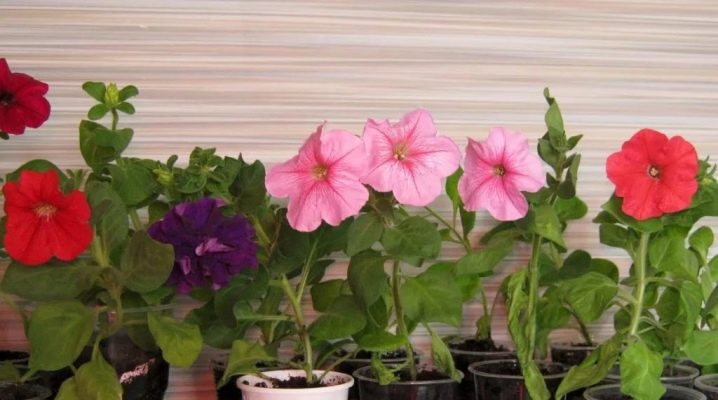
In the climatic conditions of Russia, petunia is an annual plant, it has spectacular decorative features, is decorated with abundant, lush flowering of a variety of colors. Florists love to grow petunia, as it is very unpretentious, does not require complex care. In Siberia, it is necessary to plant seedlings on petunias, other methods will not work.
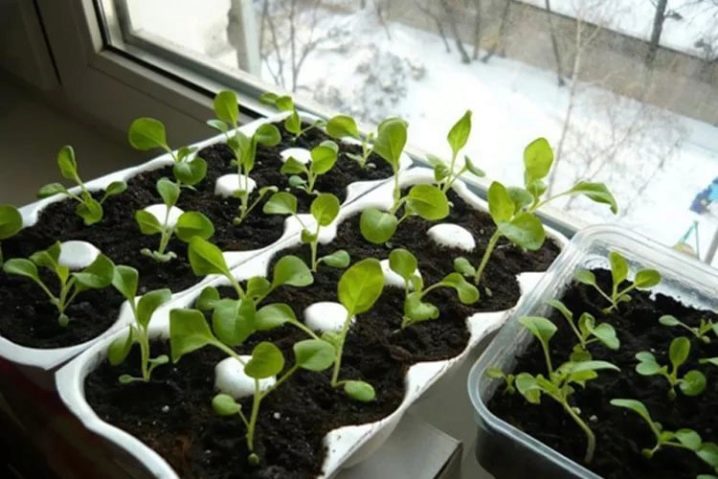
It is important to sow the seeds correctly, observe the timing of sowing and planting a plant - if these conditions are met, it is quite easy to grow flowers.
Why are seedlings necessary?
The seeds of this flower are quite small, grow for a long time, so petunia can be grown without seedlings only in warm climates, for example, in the southern regions. If you plant seeds in the ground where the summer is short, then at best they will bloom by autumn. Florists do not recommend experiments of this kind, especially since you can grow any number of seedlings and decorate not only balconies and hanging boxes and pots, but also paths, lawns, flower beds. If there are too many seedlings, it can be donated or sold, because petunia is so popular with summer residents and flower growers.
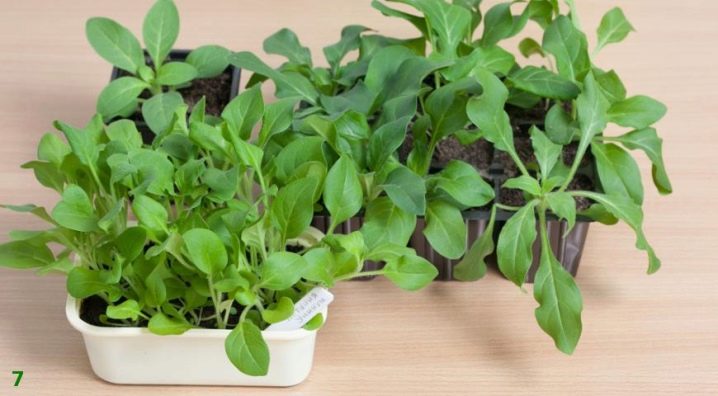
Optimal sowing time
To choose the optimal time for sowing seeds, first you need to find out how the seedlings develop and what are the nuances of growing it. First of all, you need to understand that this flower belongs to the long-growing ones:
it takes about a week for the first shoots to emerge;
then, within a month, they grow to shedding;
only after a three-month period the plants can be transplanted into open soil.
Thus, from the beginning of sowing to the final planting in the ground, at least three months should pass, and preferably four. If you want to shorten the time it takes for mature seedlings to form, arrange additional light sources. You can purchase or make phytolamps yourself and place containers with seedlings under them. Such lighting significantly accelerates the maturation of petunia sprouts.
Florists recommend using the lunar calendar to choose the sowing day.
So, the growing moon is the optimal time for sowing seeds, but on the full moon and on the new moon, it is undesirable to plant petunias.
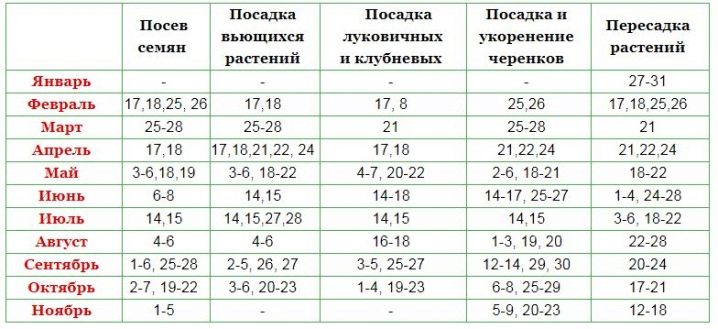
Seed collection
In order to save money, it is recommended to collect seeds for planting yourself, since decorating a large flower bed requires a lot of planting material. Collecting does not require financial investments, in addition, it gives a good experience for a novice florist. The procedure is carried out after the end of the flowering period, when the seed pods are fully formed. Seeds can be harvested both from varietal petunias and from hybrid ones, but the latter can be of completely different colors, since the parental properties of the hybrids are not preserved.
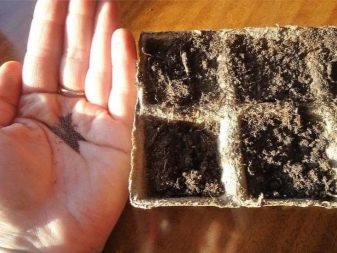
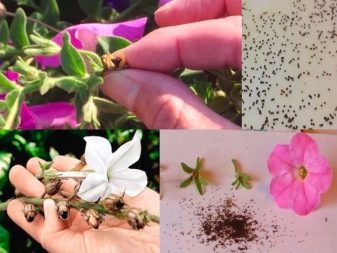
How to sow correctly
The optimal soil for petunias is loose, nutritious, with good moisture permeability. Do not use acidic and alkaline soils. Florists recommend either purchasing a prepared soil composition for flowering plants, or creating it yourself. To do this, you need to connect:
2 parts of sod land;
2 parts of peat that has already decomposed;
2 parts of moused manure;
1 part sand.
After mixing, the soil is sieved twice through a sieve (larger and smaller), and this completes the preparation of the nutrient composition.
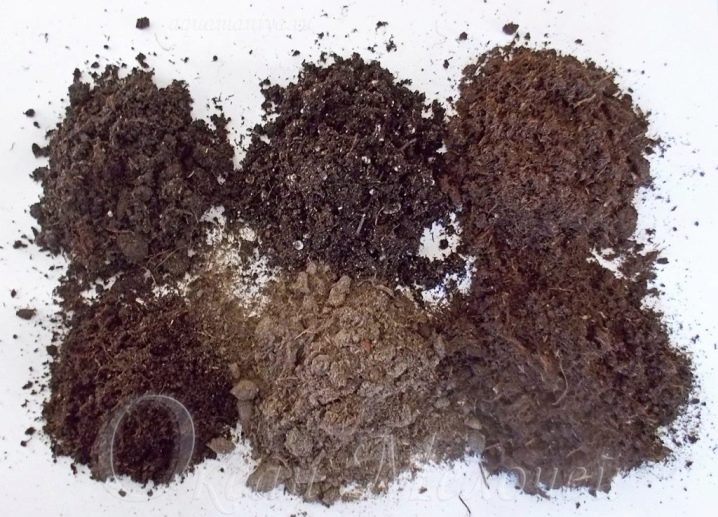
The container for future seedlings should be shallow, flat in appearance with drainage holes at the bottom. The drainage layer can be formed from broken brick, foam, pebbles or kermazite. The materials should be well crushed. Further, the soil is disbanded, but not to the very top: it is necessary to retreat 5-6 centimeters from the edge of the container. After that, you need to properly moisten the soil with a spray bottle.
Next comes the sowing turn. Seeds are spread over the surface, sprinkled, slightly crumbling with soil. Then the container should be covered with polyethylene or glass and sent to a previously prepared place, where it should be quite warm and light. The optimum temperature for seedlings is +24 degrees. Leave some open spaces for ventilation when closing the drawer. Moisten and ventilate the soil regularly before sprouting.
For seeds to germinate and sprout, you need to provide good lighting. It can be both natural and artificial light, so place containers on a window or under a phytolamp. If everything is done correctly, seedlings will appear in a week, but you should not open them right away, they must adapt to new conditions. Temper the sprouts gradually, starting at 5 minutes per day and increasing the hardening time daily. After that, you can remove the glass or film.
Tempering will ensure fast growth and good health of the seedlings.

Picking
A month later, leaves appear on the seedlings, and after a couple of leaves are tied, it is time for the sprouts to dive. Planting in separate pots takes place in compliance with a number of rules:
choose small pots: either special, or adapt plastic cups;
fill them with soil, first make holes for drainage, otherwise the soil will stagnate and turn into a swamp;
properly moisten the soil in which the sprouts have sprouted and leave it for an hour, otherwise it will be difficult to remove them without damage;
using a toothpick, carefully remove the sprout from the ground, plant it in a separate container;
deepen when planting to foliage;
moisten with warm water and leave in a warm place;
the first days, protect the plants from exposure to direct sunlight, otherwise they will wither.
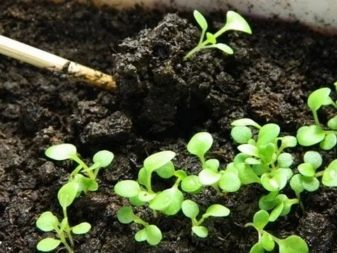
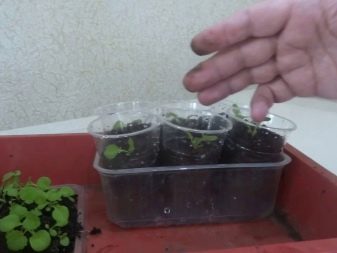
Transplant and seedling care
It is necessary to allow the plants to grow stronger after the pick, therefore it is recommended to wait three weeks, after which the seedlings are trans-shipped in larger pots. Moisten the soil regularly, but avoid excess moisture - moderation is important. If the watering is too abundant, the plant can get sick, if not enough, it can dry out and die. Therefore, do not allow a dry crust to form on top of the soil. Watering is carried out with water at room temperature from a small watering can directly under the root.
High-quality light is also important, especially since the duration of daylight hours should be about 16 hours. During the day, place a flower on a window on the south side, in the evening, arrange artificial lighting under a phytolamp. Also keep the lights dim at night. In such conditions, the plant develops and grows very quickly, so you should be ready for planting ahead of time. Do not allow the seedlings to grow, otherwise it will not take root in a new place.
Start the sowing procedure no earlier than the end of February.
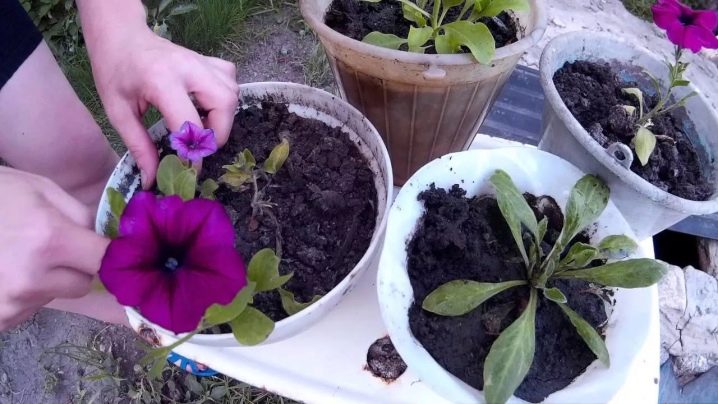
Landing
It is possible to plant petunias under the open sky in the first half of May, but this time must be varied depending on the presence of frost. Choose a location where there is enough sun and no excessive drafts. The soil is preferable moist, loose. Petunia is a fairly strong plant, it can withstand even at temperatures slightly below zero, but it is better not to subject it to such tests and not rush to transplant it to the street. If temperatures are unstable, postpone disembarkation until early June.
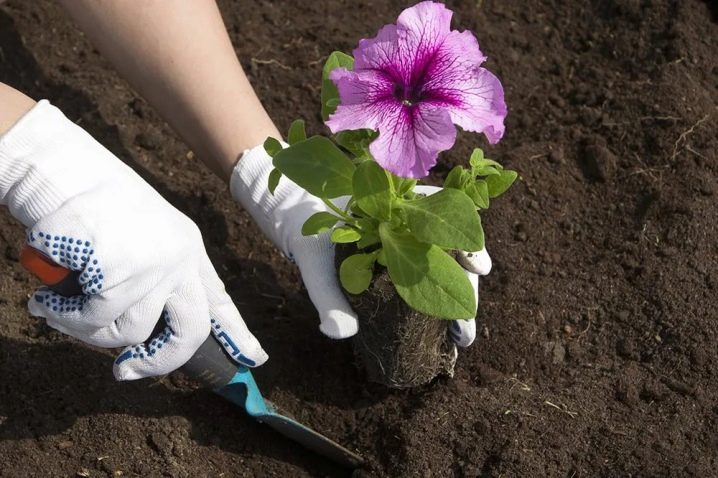
Do not forget that immature, newly planted plants do not like direct sunlight, so the optimal time for planting is evening or morning. After replanting, moisten the soil and sprinkle with mulch. It is recommended to cover the plants with agrofibre, it will serve as an excellent protection from the coolness and bright sun. After a week, feed the flower with a mixture of ten parts water and a part of a mullein. If the planting procedure and subsequent care are carried out correctly, until the onset of the autumn cold, petunia will decorate your site.
For information on how and when to sow petunia, see the next video.







































































































The comment was sent successfully.